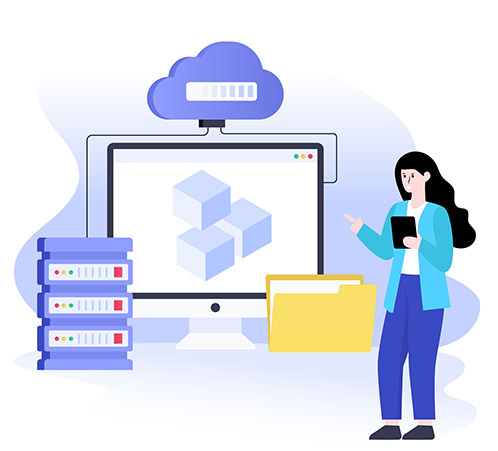Client Overview
A mid-sized business with a team of 20 employees faced significant IT infrastructure challenges before the COVID-19 pandemic. Their operations were structured in a hybrid work model, with some employees working in-office and others remotely. However, technical limitations and high costs associated with their on-premises server created major obstacles to efficient workflow.
Initial Problem
The client encountered several key challenges before transitioning to the cloud:
- Limited internet bandwidth prevented remote employees from connecting efficiently to the office-based server.
- High server upgrade and maintenance costs, with two major upgrades required before the pandemic.
- Increased IT support costs for managing and troubleshooting remote access issues.
- Reduced productivity due to unreliable remote access and frequent support calls.
These challenges made it clear that continuing with an on-premises server would hinder business efficiency. The client needed a solution that would provide reliable remote access, reduce IT expenses, and improve productivity.
Decision to Transition
The combination of high IT maintenance costs and the COVID-19 pandemic pushed the client to adopt a fully remote work model and migrate from an on-premises server to NanoCloud. Their objective was to enhance connectivity, reduce operational expenses, and improve employee productivity.
Implementation & Transition
Timeline
- Migration Start Date: February 2021
- Total Transition Time: Two weeks
- Migration Approach: Full transition (no phased migration)
- Key Challenge: Configuring on-premises printers to integrate with the cloud solution, resolved through network configuration adjustments.

The transition to NanoCloud was swift and efficient, ensuring that all employees, whether remote or in-office, had seamless access to company resources. Despite some minor technical hurdles, the migration was completed within the planned timeline.
Cost Analysis
Pre-Migration Costs (On-Premises Server)
- Annual Server Maintenance: $6,000–$8,000
- IT Support Costs: $10,000 per year
- Additional Power & Energy Costs: Not quantified but contributed to overhead
By moving to NanoCloud, the client eliminated unpredictable IT support costs and reduced energy expenses, making the slightly higher cloud subscription cost a worthwhile investment for long-term financial stability.
Post-Migration Costs (NanoCloud)
- Annual Cloud Subscription: $12,000
- IT Support Costs: $0 (Included in NanoCloud Subscription)
- Energy Savings: Significant Savings due to elimination of on-premises server setup.
By migrating to NanoCloud, the client shifted from unpredictable IT maintenance expenses to a stable, predictable subscription model. The elimination of IT support costs and energy expenses balanced out the higher cloud subscription, resulting in a net financial advantage. This transition also allowed for better financial planning and resource allocation, ensuring a smoother long-term IT strategy.

Financial & Productivity Gains
- IT Support Savings: $10,000 per year
- 50% reduction in daily IT support calls, indicating improved system stability
- Increased productivity as remote employees could now seamlessly connect to the cloud-based system
- Scalability benefits, allowing the business to expand operations without significant IT infrastructure investments again
- Reduced office space dependency, lowering operational costs related to physical infrastructure
These financial and operational benefits significantly outweighed the initial migration costs, making cloud adoption a cost-effective and productivity-enhancing decision for the client.
Client Satisfaction & Long-Term Impact
The transition successfully met the client’s expectations, addressing their primary concerns—cost reduction and productivity enhancement. Employees adapted well to the cloud infrastructure, and the business benefited from a more scalable, cost-efficient, and reliable IT environment. The company also reported enhanced data security, improved collaboration among remote teams, and greater business continuity with minimal downtime.
Key Takeaways
- Cloud solutions eliminate server maintenance costs and reduce reliance on dedicated IT support.
- Remote work models are more sustainable when paired with a reliable cloud infrastructure.
- Businesses should anticipate integration challenges (e.g., printer connectivity) and plan network configurations accordingly.
- Scalability in cloud solutions ensures future growth without recurring hardware upgrade costs.
- Enhanced data security and accessibility make cloud solutions a strategic long-term investment.
Overall, cloud solutions provide businesses with greater scalability, security, and cost control, allowing them to adapt to changing work environments without the constraints of physical IT infrastructure.
Final Recommendation
Based on this case, other businesses should consider moving to the cloud, especially if they struggle with high IT maintenance costs and unreliable remote access. The built-in IT support, cost predictability, scalability, and security benefits make cloud solutions a financially viable and operationally efficient choice. Companies that transition to the cloud not only achieve significant cost savings but also gain a competitive advantage in agility and innovation.

